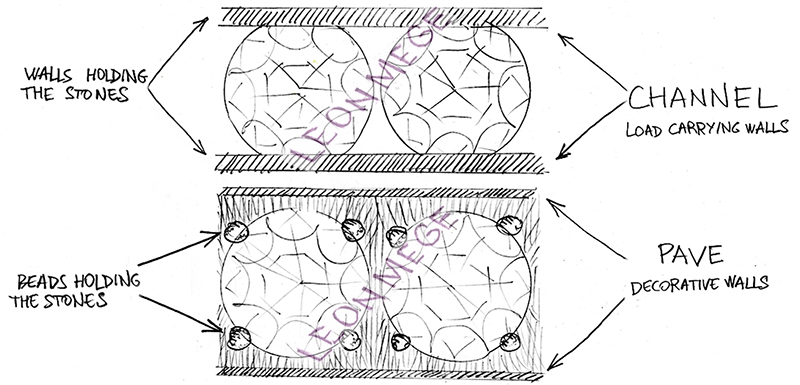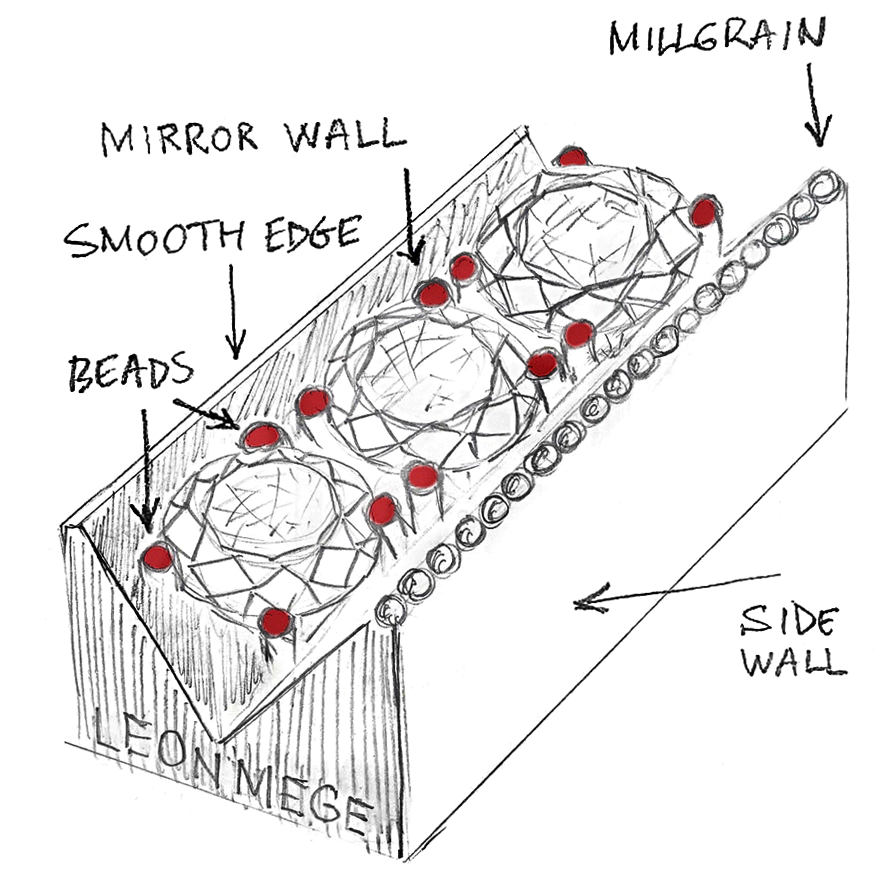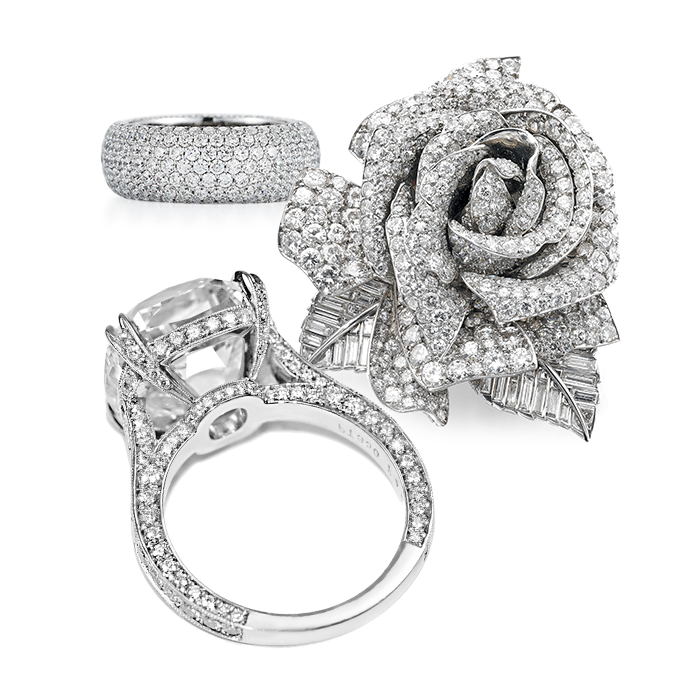
Pave is a stone-setting technique jewelers use to embed diamonds or gemstones. It is done by drilling dimples into the surface and carving small pins in the surrounding metal. A stone is wedged in, and the pins are pressed down with a beading tool capping the stones. The fringes are etched or engraved with an eye-pleasing pattern that mimics diamond faceting and gives the variation its name, i.e., “fishtail.”
Pave vs. Channel
The Channel setting and Bright-cut pave look very similar to the uninitiated and are often confused. Despite their visual similarity, they hold stones differently. In pave, the stones are held with beads carved from the underlying metal. The edges of the groove with pave look similar to the channel walls. But these edges have a decorative purpose and do not hold the stones; they only add definition to the space covered with pave. In the channel setting, the stones are held with the walls folded over the diamonds. Only mass-produced jewelry uses channel-setting for round stones because it’s the cheapest way to set them. In high-end jewelry, only square or rectangular stones are channel-set, while round stones are set with pave.
Traditional Pave
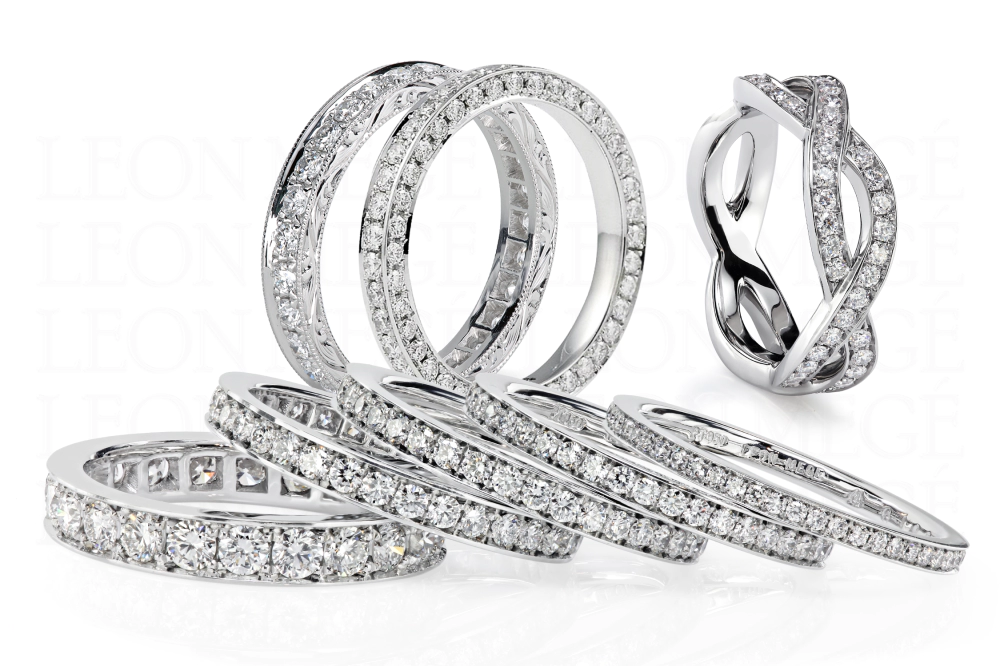
Stones in Bright-cut pave are laid along the bottom of a V-shaped chiseled groove. The groove’s walls work as mirrors, giving diamonds the illusion of having a different shape determined by the edge boundaried. Because of that, the bright-cut pave was used for concealing the irregular shapes of antique diamonds. Correcting odd shapes is no longer needed for modern precision-cut, perfectly calibrated stones.
Vintage Bright-Cut
Vintage bright-cut pave was usually set with two common beads holding two adjacent stones. Additional beads would be used to fill the gaps between stones. In contrast, a contemporary bright-cut pave usually has four beads for each stone. The stones are better secured, and the beads are less visible.
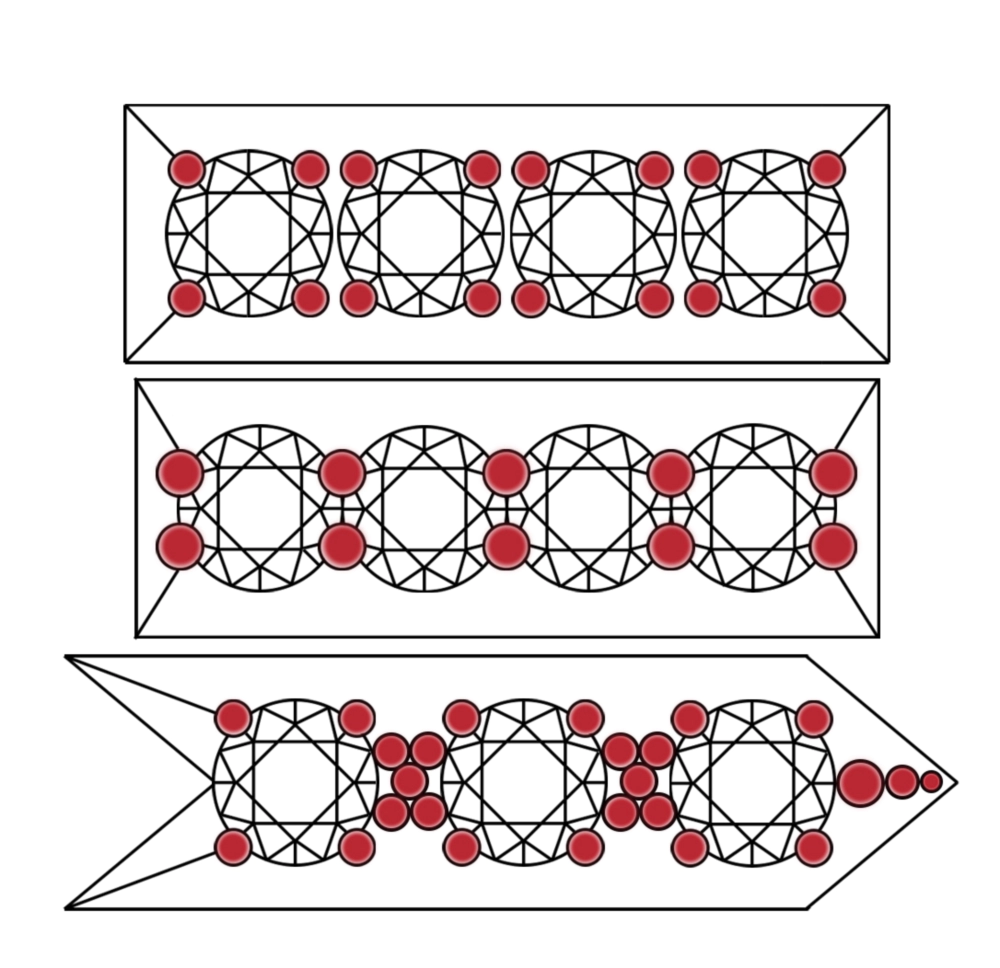
Millgrain (millegraine or milgrain) is a row of decorative beading along the top edge of the wall. This row of tiny beads is embossed with a special tool. It gives a piece an intricate, lacy appearance. It is also helpful for masking nicks and scratches from wear and tear. Millgrain was used extensively during Victorian and Edwardian times.
Advancements in machine cutting allow small diamonds to be so precise that the need for corrective measures such as mirrors and borders has disappeared.
Modern pave
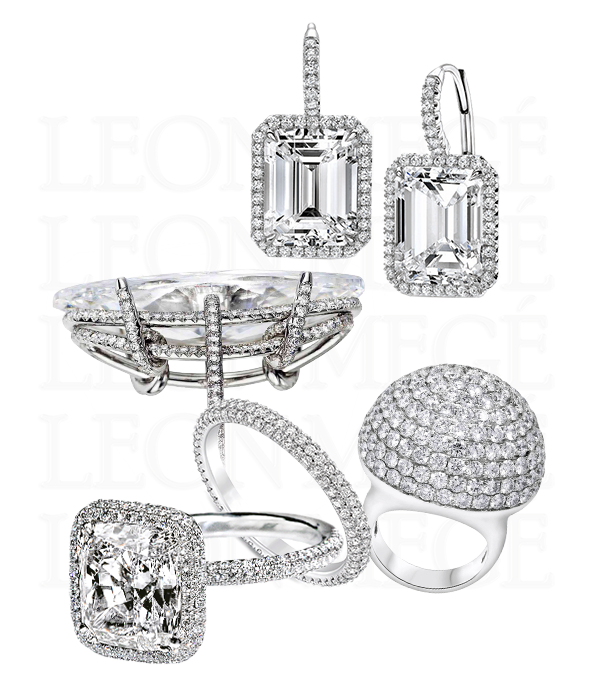
Modern pave has an easily recognizable rounded look without hard edges, with stones exposed from all sides. There is always a compromise between the beauty and wearability of pave. Small beads result in a better-looking pave where each stone stands out but they become more and more vulnerable to wear and tear.
Cut-down, mushroom, V-cut, and Fishtail are variations of modern pave where the metal on both sides of the diamonds slopes away. The main difference is the relationship between metal width and stone sizes and how the diamond seats are finished. Most modern pave uses four equally-spaced beads to hold each stone. Unlike old-fashioned two-bead pave, four beads are better at holding stones. In a shared bead setting, two fat beads are shared by neighboring stones. Two-prong pave visually stretches the stones, giving them a somewhat oval appearance.
Cut-Down Pave
Cut-down pave features small arches and vertical slits on both sides of the stone’s seat. Those without formal jewelry training call it French Pave or U-cut pave. Cut-down is the most common type of modern pave.
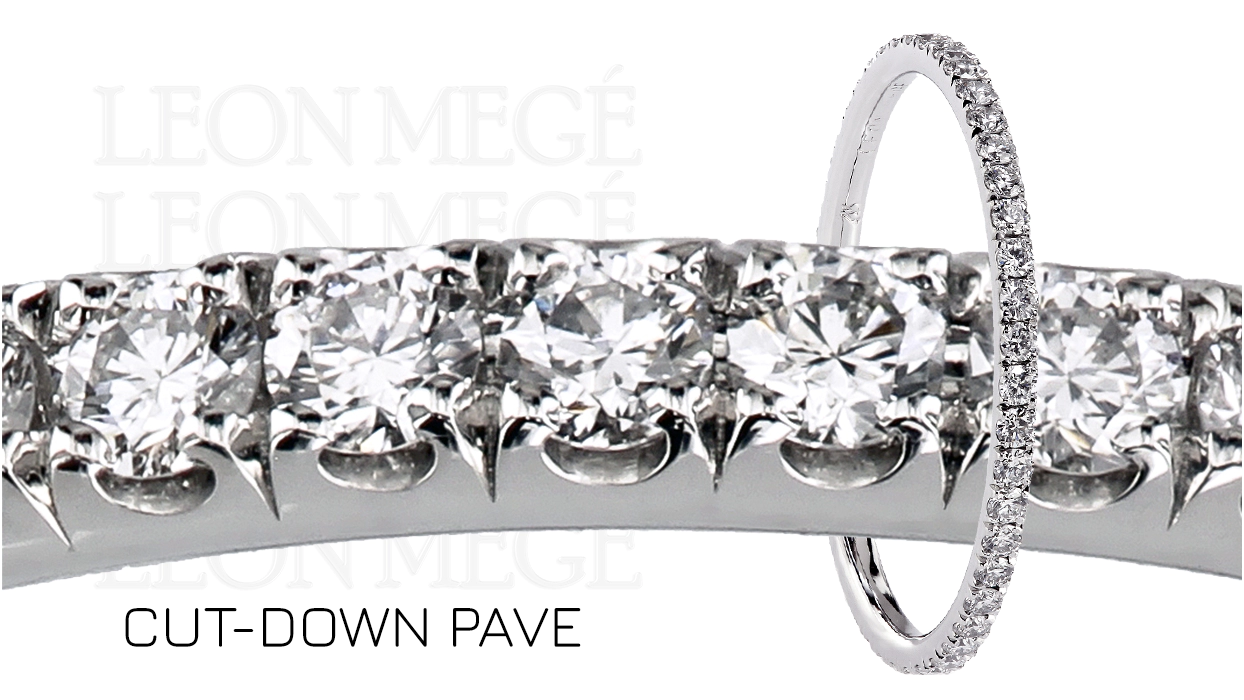
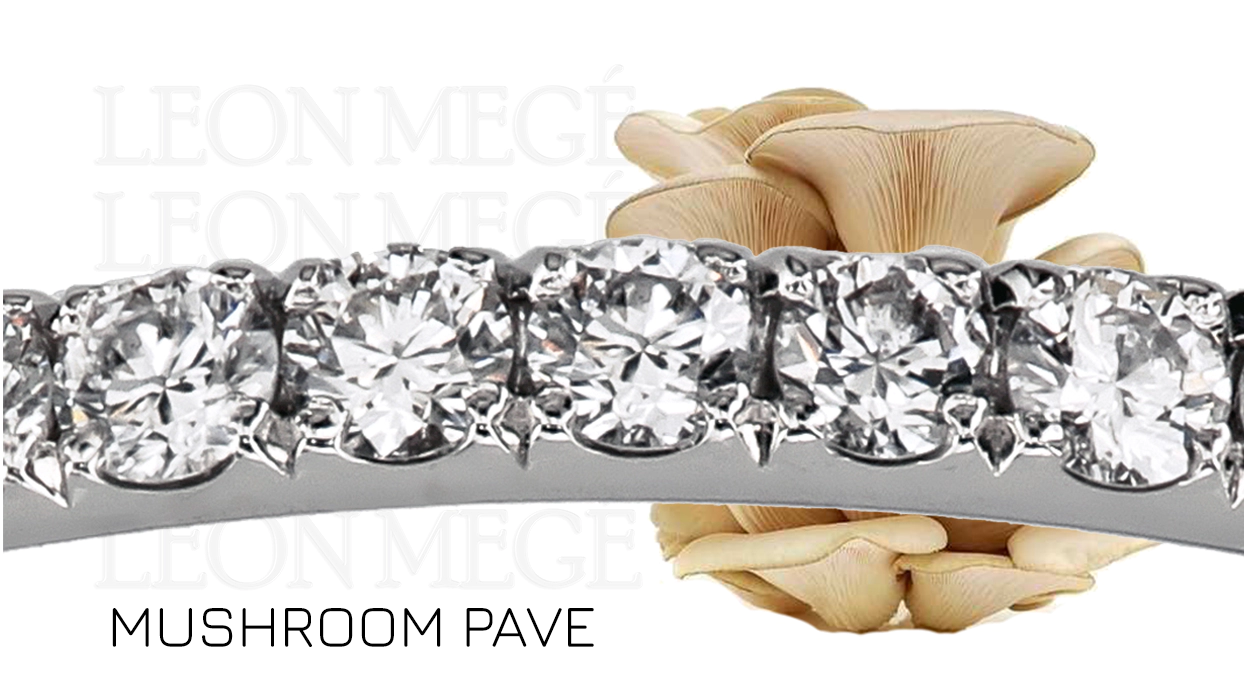
Mushroom Pave
Mushroom pave is set single-file on very narrow strips of metal nearly the same width as the stones. This type of paving is delicate, usually applied to decorative elements, filigree, or prongs as a string of stones seemingly suspended in the air.
V-Cut Pave
V-cut pave is used to pave larger widths of metal. The V-shaped pattern engraved on both sides of the diamonds camouflages the excess metal. The engraving is a low-profile bas-relief of prong-like extensions intersected at an acute angle. This is a labor-intensive type of setting suitable for larger stones.
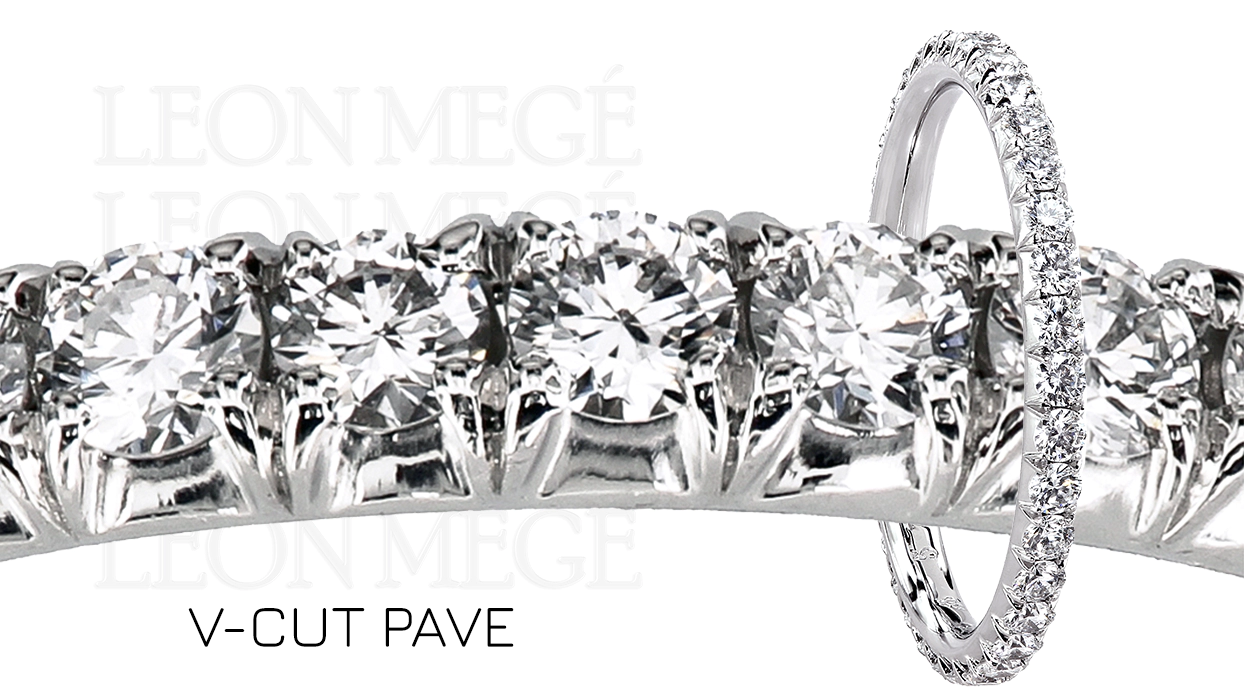
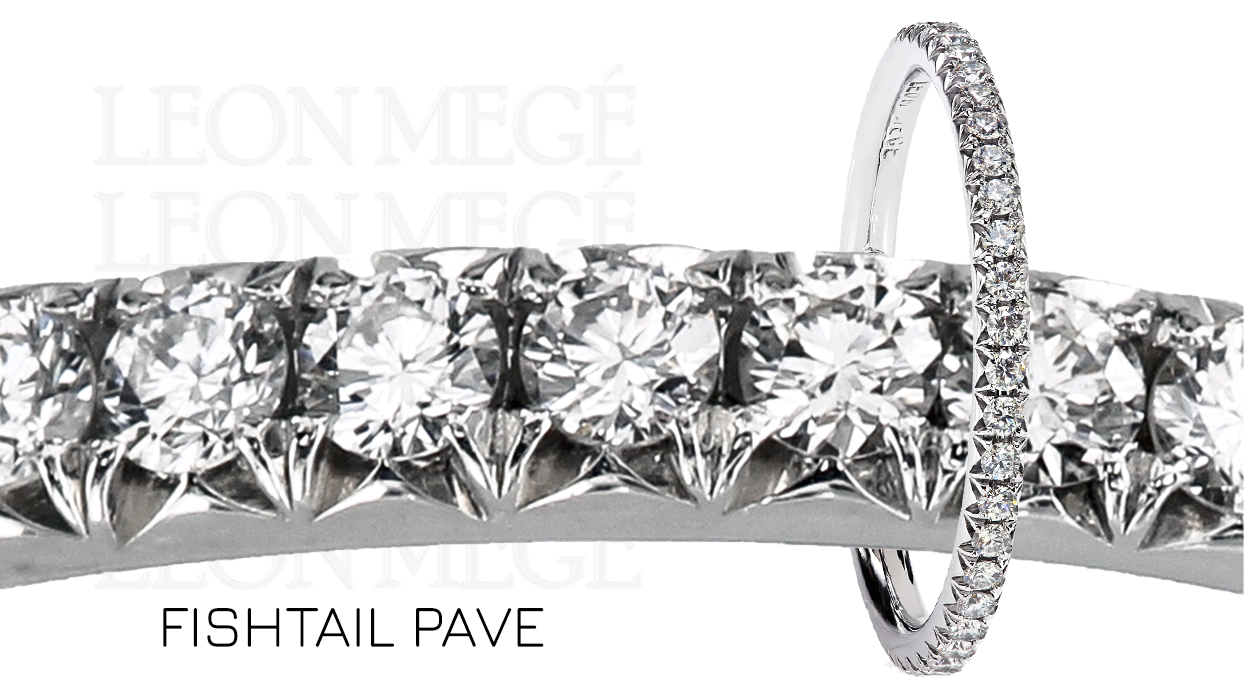
Fishtail Pave
Fishtail pave is a pattern of small mirrors faceted on each side under the stones. These mirrors mimic diamond facets in how they reflect the light, creating the illusion of larger stones. The facets mask the exposed metal, which is left thicker for strength. The metal faceting echoes the look of the forked tail of a fish, hence the name. Fishtail pave allows small diamonds (1.1 mm or less) to look bigger and sparklier. Larger stones require a deeper engraving that looks like spur gear.
Micro Pave
Micro pave is a gemstone mosaic covering the surface of the metal. It has multiple interlocking rows of stones that follow the exterior curve. Micro pave is usually set with small stones but can also include stones of all sizes. Micro pave is a generic term for any pave set with small stones. This usage is not correct. No matter how small the stones are, a single row of pave is not micro pave.
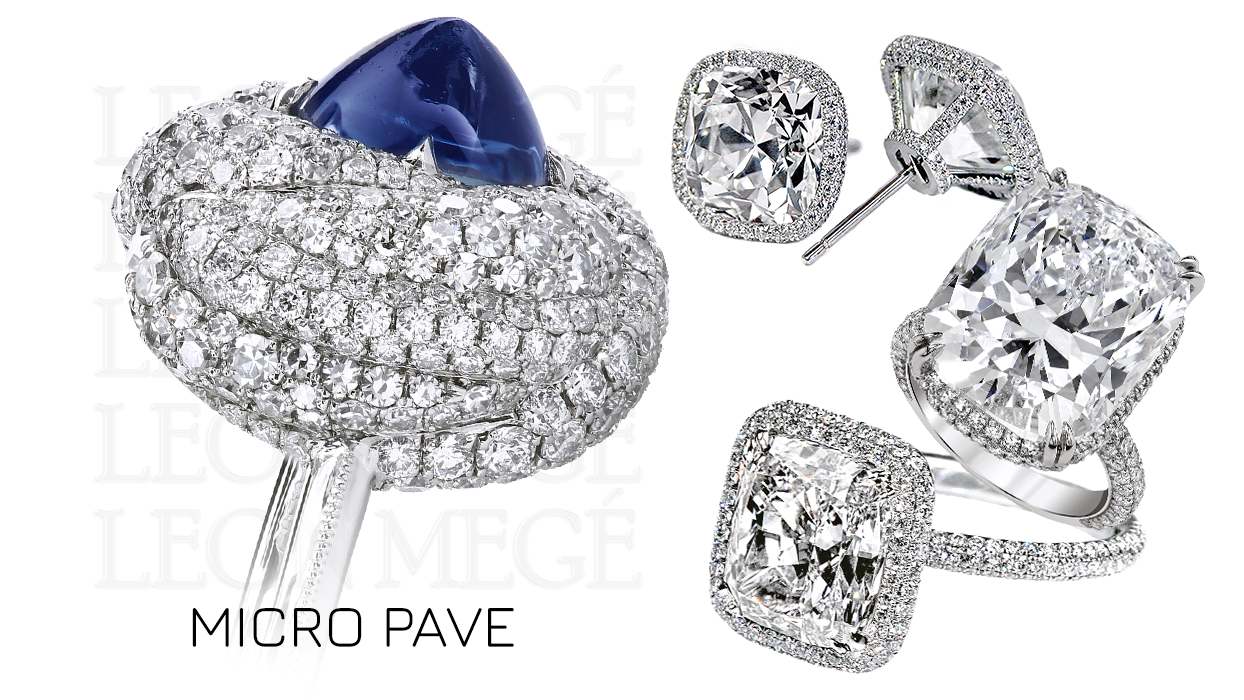
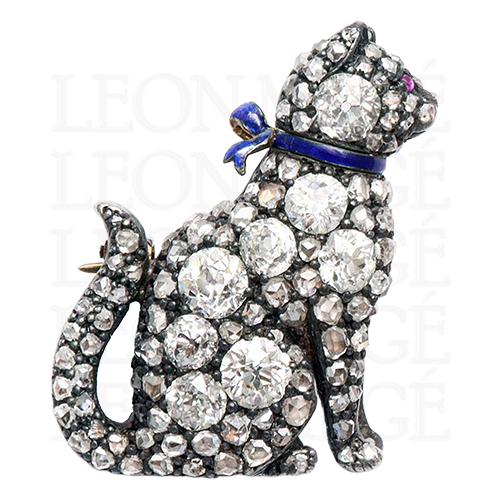
Random Pave
Random pave is a variation of micro pave with a mix of diamond sizes arranged in an artistic, nature-invoking, seemingly random way.
Belgian pave
Belgian pave is formed by two interlocking rows of diamonds meeting at a sharp angle. Very difficult to set, therefore, rarely used.
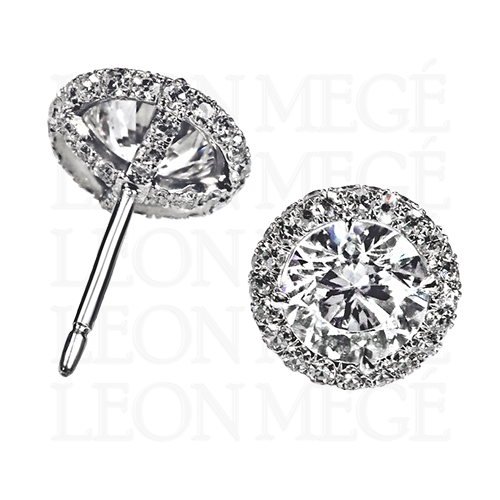
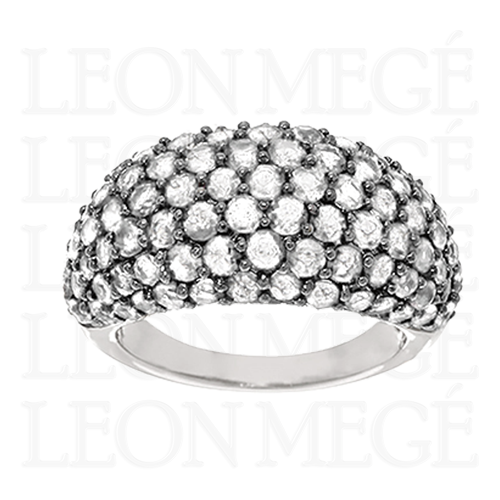
Royal pave or six-bead pave
Royal pave is an old-fashioned technique, a precursor of modern pave. It forms a honeycomb pattern dotted with metal beads. Each bead is the tip of a prong occupying a small space between three adjacent stones. One bead holds all three stones at the same time.

